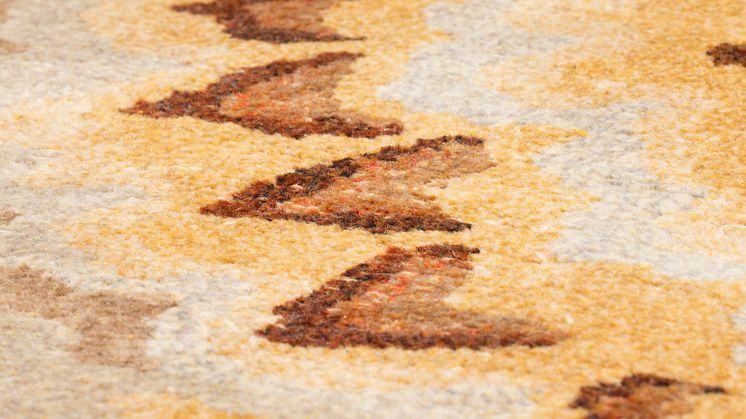
Press release -
New acquisition: Rug designed by Gustaf Fjaestad and woven by his sisters Anna and Amelie
Nationalmuseum has added a rug designed by Gustaf Fjaestad to its collection of 20th-century Swedish textiles. The rug, featuring a motif with the title Goshawk, was woven by the artist’s sisters, Anna and Amelie Fjaestad, in 1927. Gustaf Fjaestad, a member of the National Romantic school, was noted for his skill in combining acute observations of nature with ornamental design. In this piece, he was influenced by 1920s Art Deco.
At the turn of the 20th century, a group of artists led by Gustaf Fjaestad and his wife Maja established a colony on the shores of Lake Racken, north of Arvika in the Swedish province of Värmland. The group, often referred to as the Racken Group or the Rackstad Colony, included several other artists and expanded over time to include practitioners of various fine crafts: textiles, blacksmithing, ceramics and furniture making. Gustaf’s sisters Anna and Amelia, both trained weavers, established a studio producing rugs, tapestries and other textiles, most of which were designed by their brother.
The rug acquired by Nationalmuseum, Goshawk, features a stylized depiction of the goshawk’s plumage, woven using a combination of Gobelin technique and relief pile. It shows how readily the artist’s nature-inspired motifs translated into textile form. The rug is an example of both National Romanticism and 1920s Art Deco.
Nationalmuseum’s collections now reflect the full extent of Gustaf Fjaestad’s art, following the addition of the rug and two other fairly recent acquisitions: a ceiling light fixture in wrought copper and a sculptured chair carved in wood. Nationalmuseum’s purchase of the rug has been made possible by a generous donation from the Barbro Osher Fund. Nationalmuseum has no budget of its own for new acquisitions, but relies on gifting and financial support from private funds and foundations to enhance its collections of fine art and craft.
Media contacts
Anders Bengtsson, curator, applied art and design
anders.bengtsson@nationalmuseum.se, +46 8 5195 4385
Hanna Tottmar, press officer
hanna.tottmar@nationalmuseum.se, +46 767 234632
Caption
Gustaf Fjaestad, Goshawk, rug woven by Anna and Amelie Fjaestad, 1927.
Photo: Bukowskis Auktioner
Categories
Nationalmuseum is Sweden’s premier museum of art and design. The collections comprise older paintings, sculpture, drawings and graphic art, and applied art and design up to the present day. The museum building is currently under renovation and scheduled to open again in 2018. In the meantime, the museum will continue its activities through collaborations both in Sweden and abroad as well as temporary exhibitions at the Royal Swedish Academy of Fine Arts, Fredsgatan 12 and Nationalmuseum Design at Kulturhuset Stadsteatern in Stockholm. Nationalmuseum collaborates with Svenska Dagbladet, FCB Fältman & Malmén and Grand Hôtel Stockholm. For more information visit www.nationalmuseum.se.

